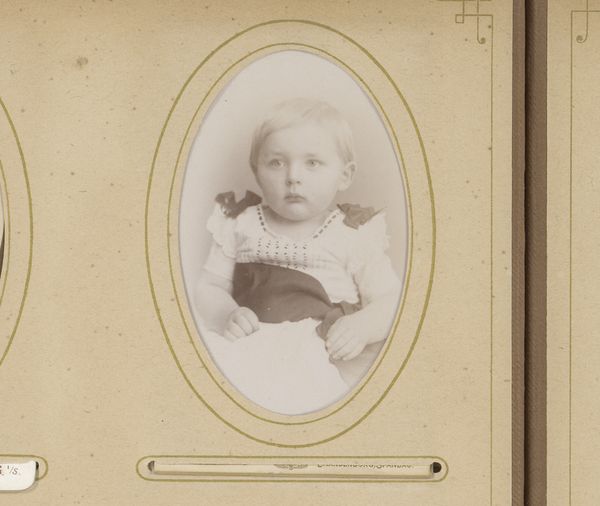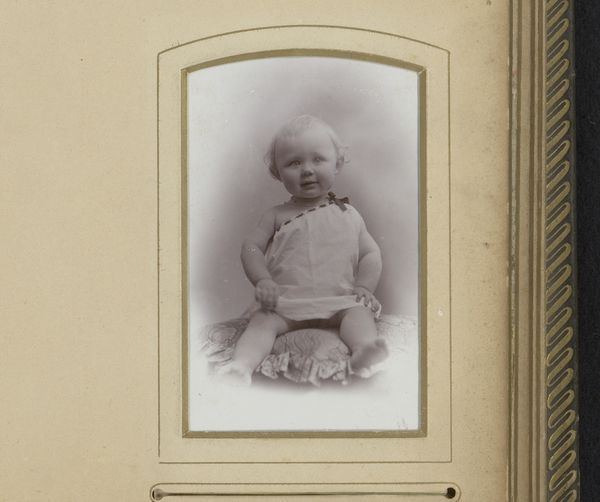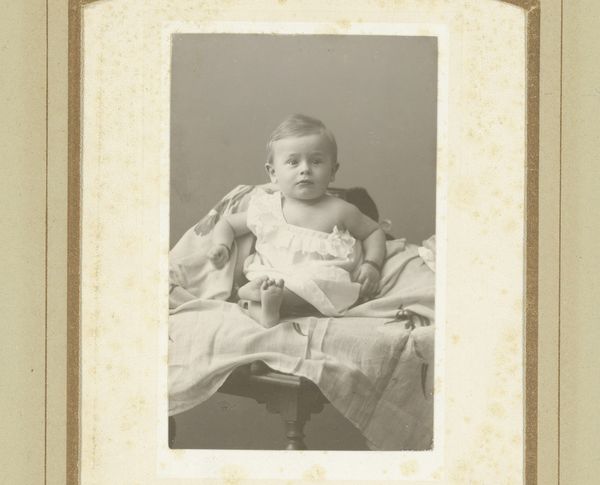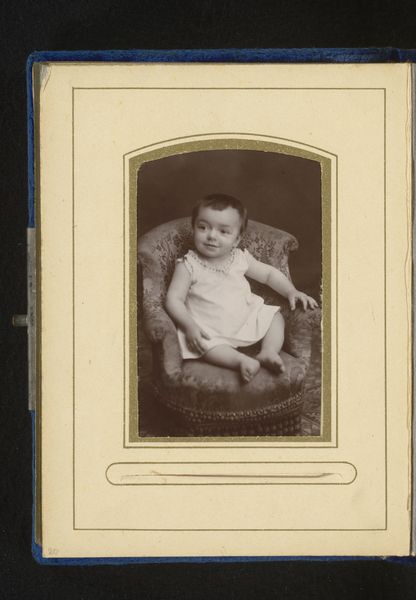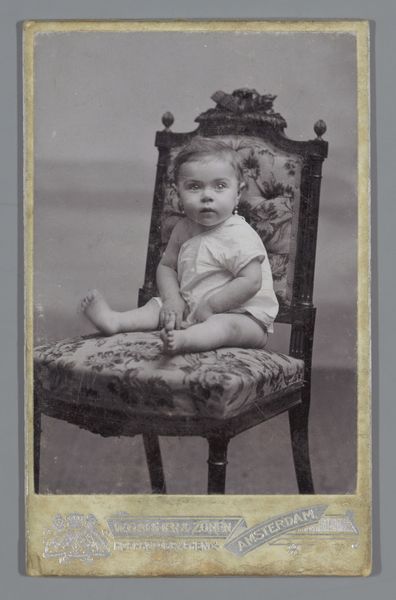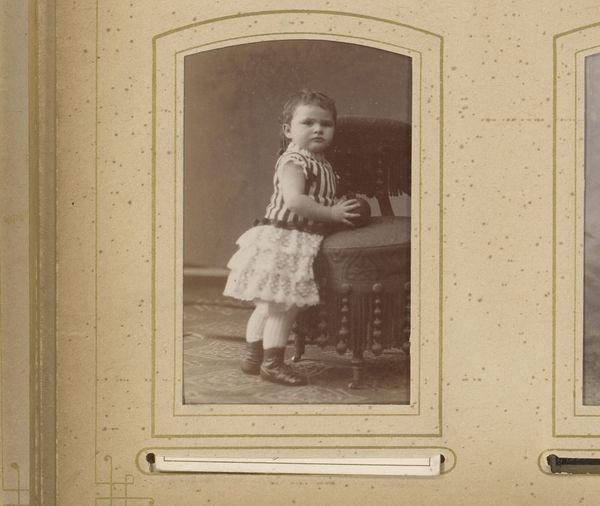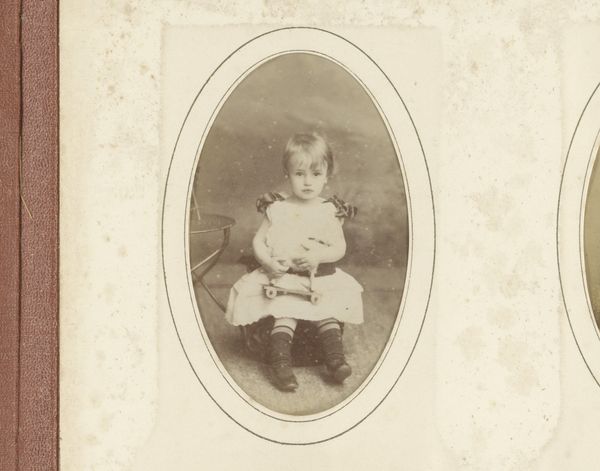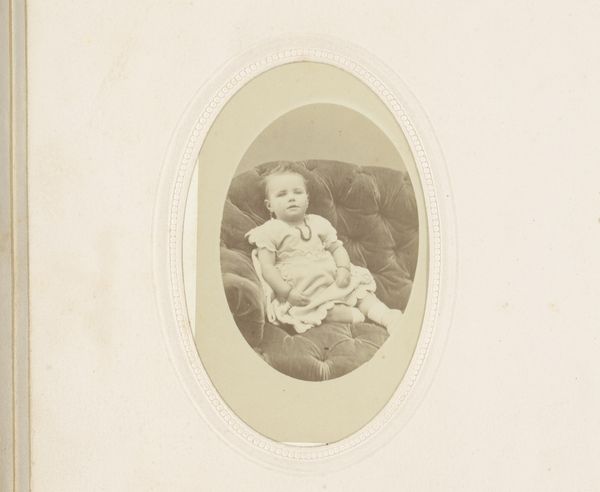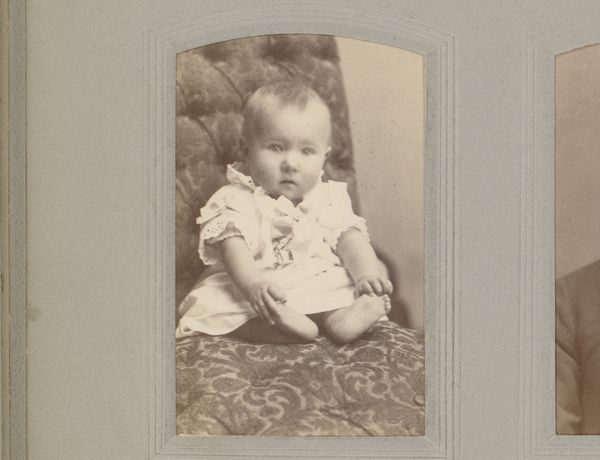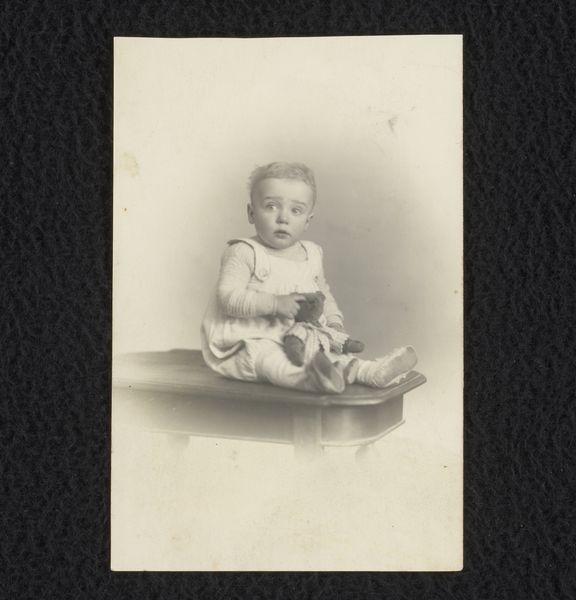
Portret van een zittende baby, aangeduid als Jacques van Meerbeke Possibly 1898
0:00
0:00
photography, gelatin-silver-print
#
portrait
#
photography
#
historical photography
#
gelatin-silver-print
Dimensions: height 82 mm, width 52 mm
Copyright: Rijks Museum: Open Domain
Editor: Here we have a gelatin-silver print, "Portrait of a Seated Baby, identified as Jacques van Meerbeke," possibly from 1898, by Louis Devolder. The baby's expression feels so serious. How do you interpret this image, considering its historical context? Curator: This studio portrait offers a fascinating glimpse into the social conventions of late 19th-century childhood. Think about the rise of photography as a means of memorializing individuals, especially children from bourgeois families. These portraits became signifiers of status and familial pride. The baby, posed and formally dressed, isn’t just an individual, but also a representation of the family's standing. How does knowing this change how you view the image? Editor: It makes me wonder about the power dynamics. Was the baby positioned this way for a specific societal message, or family goal? Was this a common style, to pose children to communicate certain aspirational values? Curator: Precisely! Posing and clothing, even for infants, were carefully chosen to project ideals of innocence, respectability, and future promise. Devolder, as a photographer, was catering to these societal expectations. The photograph also speaks to the growing industry surrounding childhood at the time, with specialized clothing, toys, and portraiture all designed to meet the needs and desires of affluent parents. Consider, too, how the photographic frame itself becomes a way of domesticating and controlling the image. Editor: So, it’s less about capturing the true essence of the baby and more about constructing an image that fits into a social narrative? Curator: Absolutely. And the fact that this is a gelatin-silver print, a relatively new technology at the time, speaks to the embrace of modernity within certain social circles. What does it tell us when even something as seemingly personal as a baby’s portrait becomes intertwined with technological progress and societal expectations? Editor: I hadn't considered all those layers! Seeing the portrait as a social and historical object really enriches its meaning. Curator: Indeed, it allows us to see how seemingly simple images are deeply embedded within complex cultural frameworks.
Comments
No comments
Be the first to comment and join the conversation on the ultimate creative platform.
